A solid Defence against 1.d4
Don’t tell us that today’s young people aren’t interested in history! Leon Luke Mendonca enthusiastically recounts how the world champions of 100 years ago successfully opted for the West Indian defense. The 18-year-old Indian GM likes to follow the beaten track himself and, in his new Fritztrainer course The Rock Solid Queen’s Indian Defence which can be viewed on all devices (PC, laptop, iPad, smartphone, etc.), he explains how amateurs and professionals alike can use this well-established solid opening to their advantage.
Renowned forerunners
Thinking of his favorite answer to 1.d4, Mendonca immediately makes Anatoly Karpov, who relied on a quick fianchetto to the Wing-♛, for example in his memorable battles against Garry Kasparov. The database also includes an example from 1995, when the world champion faced Boris Gelfand:
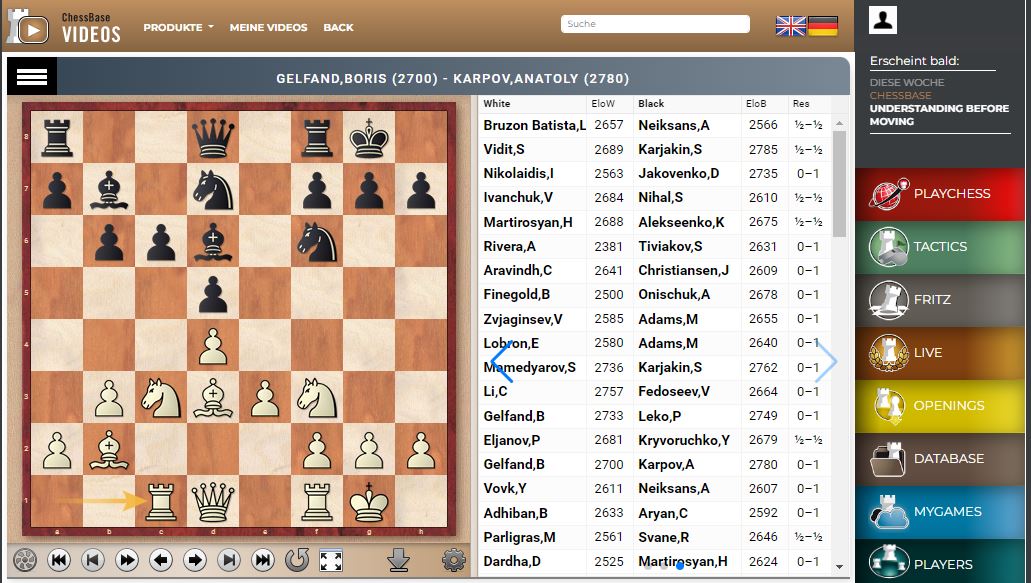
Gelfand vs. Karpov
Karpov was not surprised by Gelfand’s innovation (12.♖c1) and won the game.
It’s interesting to note that of the selected games, apart from three played by Carlsen and two by Mendonca himself, most involve Zoltan Almasi (5) and Sergei Karjakin (8). Nevertheless, many other leading players insist on the importance of this Apertura.
A lot of experience
“I focus on simple, solid variations rather than more complex ones with …♝a6 at the beginning“, says the winner of this year’s Challengers Tata Steel to explain his positional approach. However, Mendonca offers a comprehensive repertoire, mainly analyzing, in his typically calm and analytical style, ♙♟ plans and structures, as well as associated piece maneuvers. His own experience is repeatedly expressed between the lines. It’s amusing and at the same time compelling to see this 18-year-old talking about “his years of experience“.
Understanding plans
You’ll learn in this Fritztainer when unprotected ♙♟ of the West-Indian are good for Black and when they’re good for White; when the ♝ of the Wing-♛ should move to a6 and when it should be to b7, and also how Black can prevent White from attacking with ♗a3 or ♘e5.
In addition to these basic plans, Mendonca also, despite his young age, demonstrates the maturity of an experienced GM when he discusses surprising maneuvers of the ♞, such as ♞b8-d7-b8-a6, or the timely interposition of the ♝ on b4. The latter mainly consists in attracting the ♗ or one of the ♘ to d2 and thus preventing the pieces at a3, c3 or e5 from occupying active positions.
Structuring
Like many other authors, Mendonca deals first with the secondary variations. These are mainly the moves 4.♘c3, 4.e3, 4.♗g5 and 4.♗f4, similar to the London System. It’s fascinating to see how the likeable young man repeatedly explains transitions and similarities with other Openings such as the Nimzo or Semi-Tarrash, highlighting differences here and similarities there, including with the main variants.
If the mindset is mainly focused on a strategic treatment of the West-Indian, As I’ve already mentioned, when necessary or advisable, the author doesn’t hesitate to move into tactical terrain, as can be seen in variant 1.d4 ♞f6 2.c4 e6 3.♘f3 b6 4.♘c3 ♝b7 5.♗g5 h6 6.♗h4 ♝b4 7.♘d2 e5:
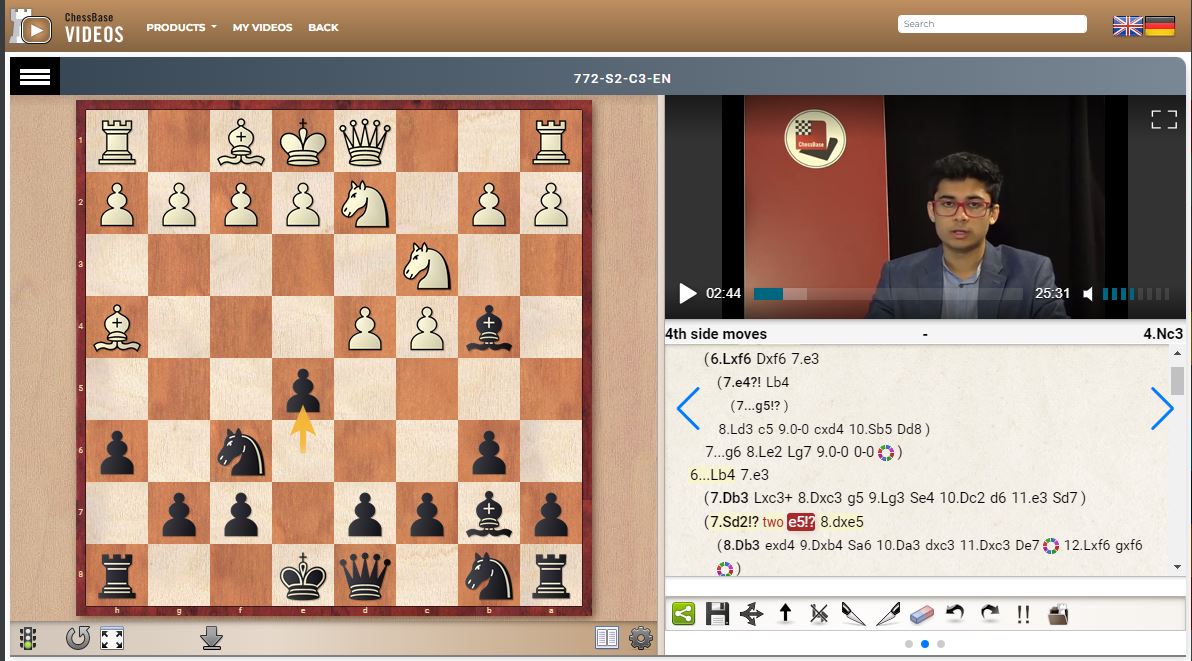
Variantes secondaires 4.♘c3; 7…e5
Here, it’s a bit tactical.
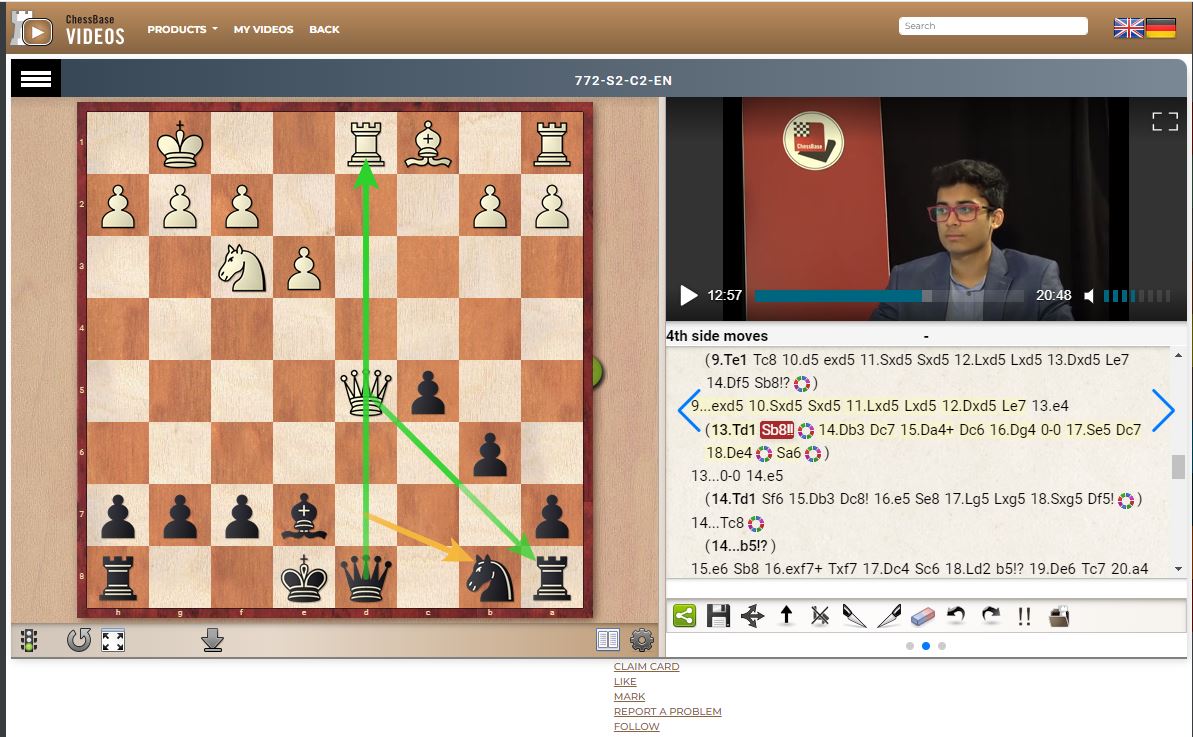
Secondary variations after 4.e3 & 4.♗g5
13…♞b8!! – what a clever move! A scare the first time it happens! But once you’ve seen it….
The chapter on secondary variants is followed by two chapters on main variants. In the chapter on 4.a3, Mendonca recommends that after 4…♝b7 5.♘c3 d5, you should be prepared both for variants deriving from the immediate capture on d5 and for those, secondary, without rapid clarification in the center.
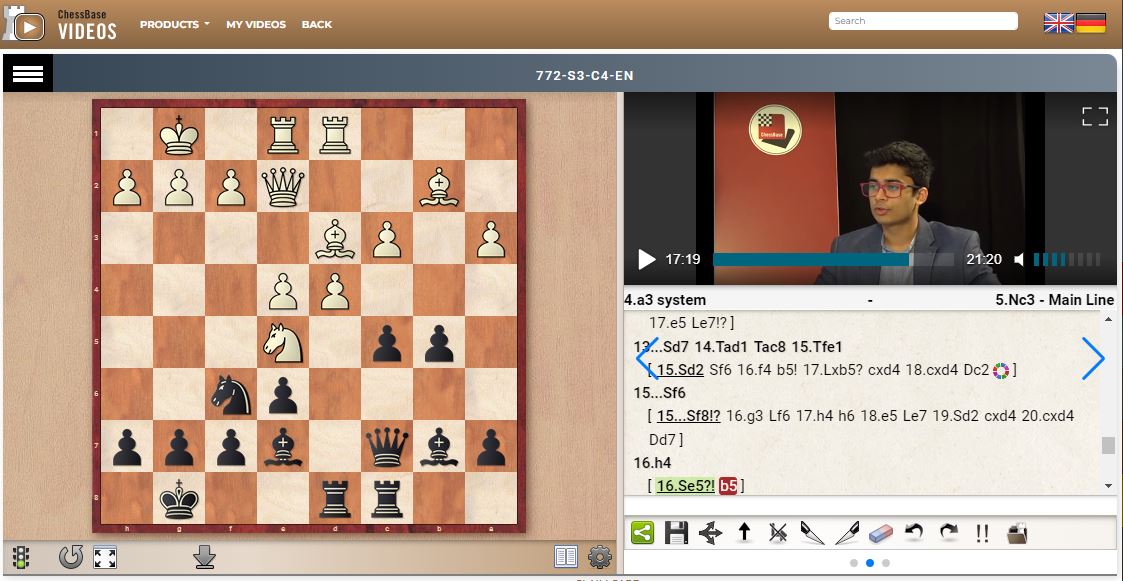
Main variant 4.a3
The sacrifice of the ♟b5 also appears occasionally, and guarantees Black a good counter-attacking game.
In the chapter on the second main variation 4.g3, Mendonca explains why he only advises 4…♝a6 here, and how to deal with the many possible answers (♕b3, ♘bd2, ♕a4, ♕c2 and b3).
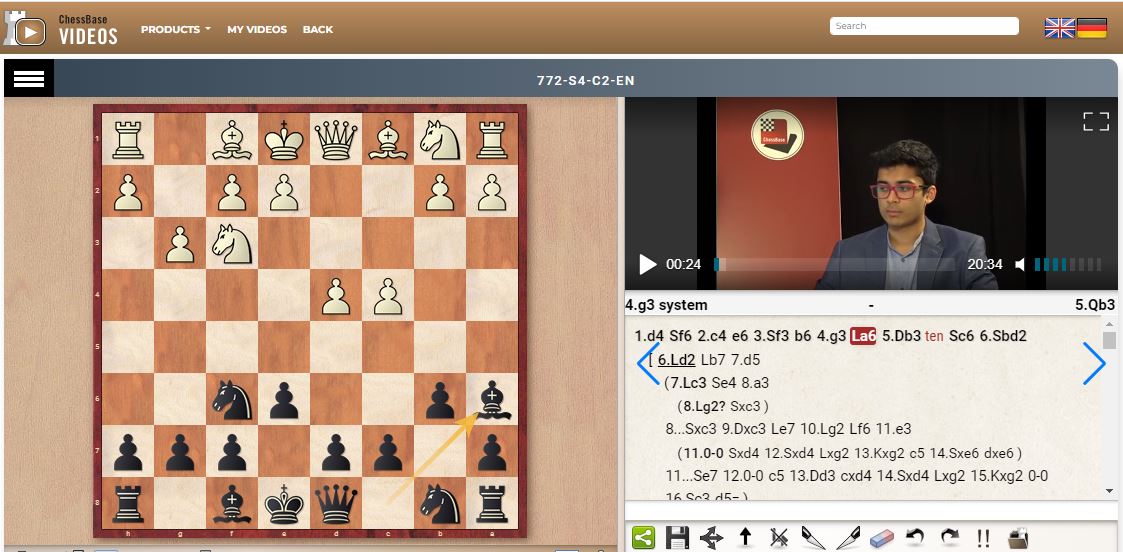
Main variation after 4.g3 ♝a6
… and the ♝ finally ends up on a6.
Theory and practice
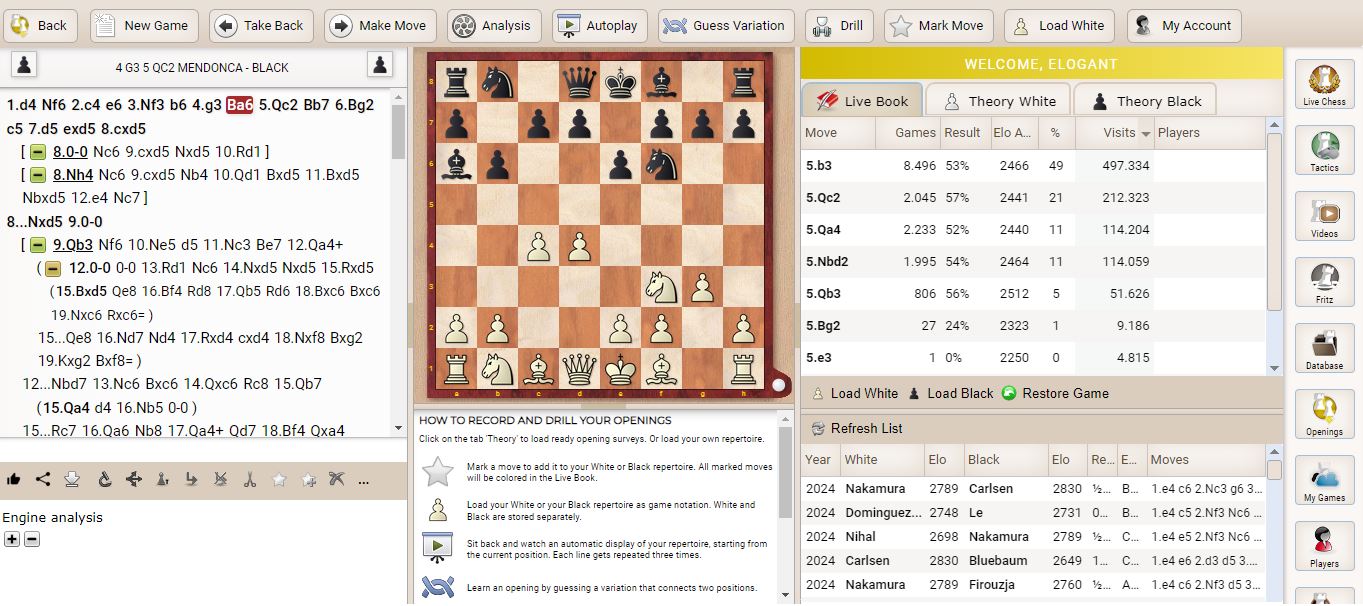
Fritz to consolidate learning progress!
Conclusion
Leon Luke Mendonca is not only a GM, but also an excellent trainer, young and promising. He analyzes in a strictly structured and objective way, which has two advantages: on the one hand, learning success can be established quickly and, on the other, one can very quickly orient oneself in the very comprehensive material provided to analyze one’s own parts in order to eradicate without delay any shortcomings that present themselves acutely.
At the end of each of the detailed explanatory videos, some of which last almost half an hour, Mendonca provides a summary of what has been explained. The diagrams and plans are precisely presented – and, where appropriate, the specific variants, those that you really need to remember in order to use the Ouverture successfully. However, says the author:
There’s not much to learn in this Opening if you understand the basic principles!
This Fritztrainer is perfect for all players who want to incorporate a solid pillar into their repertoire when facing 1.d4 with Black.
